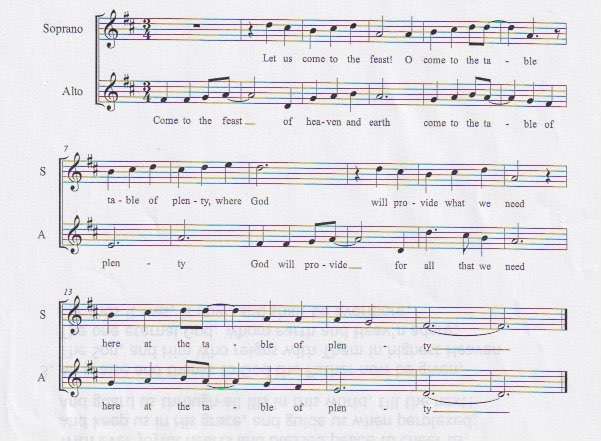
How To Sing a Descant
Primary Subject and Grade Level(s): Choir (4th - 8th Grade)
Lesson Duration: 1 thirty minute period
Relevance/Rationale: This lesson is designed to reinforce skills in reading musical notation and singing.
Outcomes/Objectives: Choir members will be able to identify and read assigned singing parts on a score. Students will be able to define what “descant” means. Students will have opportunities to sing the melody and descant parts together.
Grouping Strategy: Usually, choir members are grouped by their pitch class. With the exception of two male singers, who are countertenors, the choir members are generally between the alto and mezzo-soprano range. Since the pitch collection of the piece falls in a comfortable range the choir, the melody and the descant are assigned to all students at various times throughout the lesson; therefore, for this lesson, the choir members were simply grouped by grade.
Academic Vocabulary: Descant; melody
Materials: Piano and a copy of Table of Plenty with descant for each student:
Lesson Procedures:
1.) The instructor gives an introduction to descant. Discuss and reinforce some ideas about melody first. Thereafter, explain how a descant is an independent melody that is usually sung or played above a basic melody.
2.) Review the melody to Table of Plenty. Note: this is a common song that we sing for liturgical services in our school.
3.) Teach the descant.
4.) Since the melody is already familiar to the choir, the younger and less experienced students will be assigned that part. With the older students assigned the descant, have students sing both parts together.
5.) Rehearse numerous times. As students get more comfortable with hearing what the two parts sound like together, allow the students to switch parts.
.
Assessment: Assessment will be informal as the instructor will listen and ensure all parts are being executed satisfactorily.
